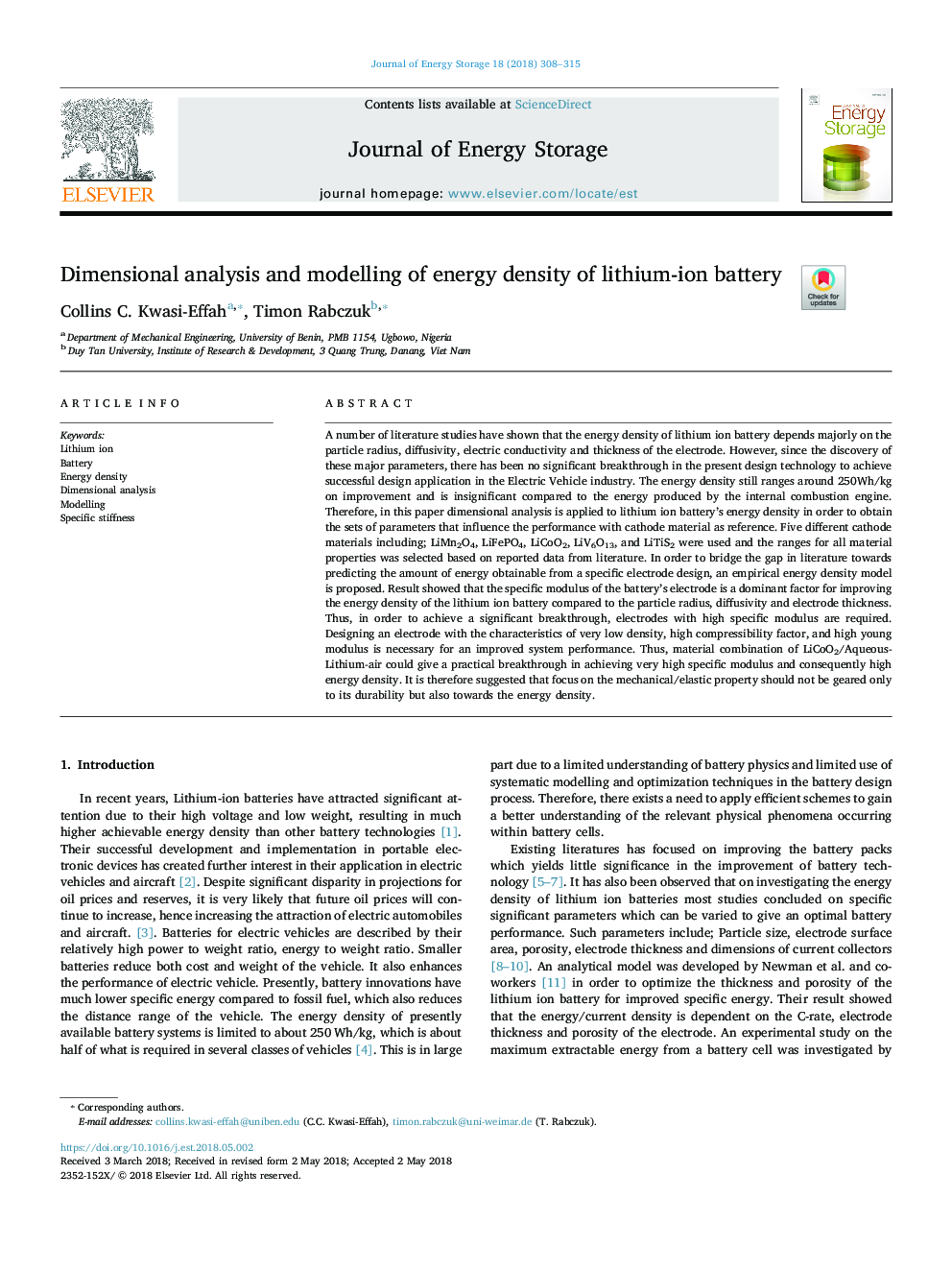| کد مقاله | کد نشریه | سال انتشار | مقاله انگلیسی | نسخه تمام متن |
|---|---|---|---|---|
| 7539818 | 1489002 | 2018 | 8 صفحه PDF | دانلود رایگان |
عنوان انگلیسی مقاله ISI
Dimensional analysis and modelling of energy density of lithium-ion battery
ترجمه فارسی عنوان
تجزیه و تحلیل ابعاد و مدل سازی تراکم انرژی باتری لیتیوم یون
دانلود مقاله + سفارش ترجمه
دانلود مقاله ISI انگلیسی
رایگان برای ایرانیان
کلمات کلیدی
یون لیتیوم، باتری، تراکم انرژی، تجزیه و تحلیل ابعادی، مدل سازی، سختی خاص،
موضوعات مرتبط
مهندسی و علوم پایه
مهندسی انرژی
انرژی (عمومی)
چکیده انگلیسی
A number of literature studies have shown that the energy density of lithium ion battery depends majorly on the particle radius, diffusivity, electric conductivity and thickness of the electrode. However, since the discovery of these major parameters, there has been no significant breakthrough in the present design technology to achieve successful design application in the Electric Vehicle industry. The energy density still ranges around 250Wh/kg on improvement and is insignificant compared to the energy produced by the internal combustion engine. Therefore, in this paper dimensional analysis is applied to lithium ion battery's energy density in order to obtain the sets of parameters that influence the performance with cathode material as reference. Five different cathode materials including; LiMn2O4, LiFePO4, LiCoO2, LiV6O13, and LiTiS2 were used and the ranges for all material properties was selected based on reported data from literature. In order to bridge the gap in literature towards predicting the amount of energy obtainable from a specific electrode design, an empirical energy density model is proposed. Result showed that the specific modulus of the battery's electrode is a dominant factor for improving the energy density of the lithium ion battery compared to the particle radius, diffusivity and electrode thickness. Thus, in order to achieve a significant breakthrough, electrodes with high specific modulus are required. Designing an electrode with the characteristics of very low density, high compressibility factor, and high young modulus is necessary for an improved system performance. Thus, material combination of LiCoO2/Aqueous-Lithium-air could give a practical breakthrough in achieving very high specific modulus and consequently high energy density. It is therefore suggested that focus on the mechanical/elastic property should not be geared only to its durability but also towards the energy density.
ناشر
Database: Elsevier - ScienceDirect (ساینس دایرکت)
Journal: Journal of Energy Storage - Volume 18, August 2018, Pages 308-315
Journal: Journal of Energy Storage - Volume 18, August 2018, Pages 308-315
نویسندگان
Collins C. Kwasi-Effah, Timon Rabczuk,
